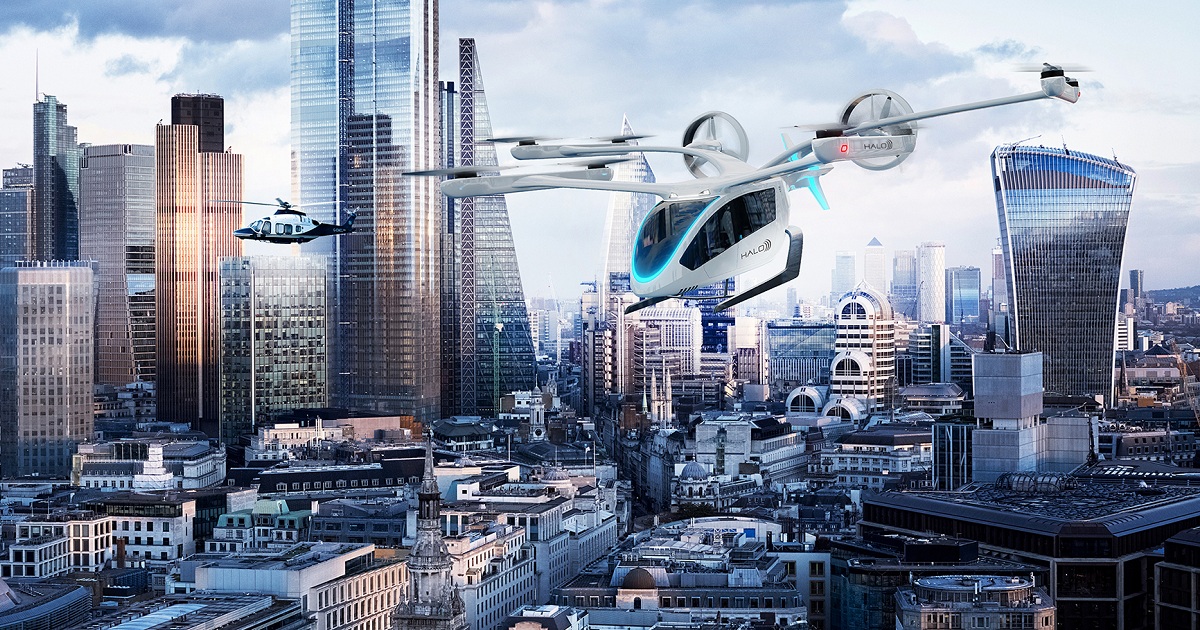Eve Introduces Halo as a Launch Partner in the Urban Air Mobility Market , with a 200-eVTOL Aircraft Order
Halo, Embraer S.A. | June 03, 2021

Eve Urban Air Mobility Solutions, Inc. (Eve) and Halo today declared an association zeroed in on developing Urban Air Mobility (UAM) items and administrations in the United States and the United Kingdom. This organization incorporates a request for 200 of Eve's electric vertical departure and landing (eVTOL) aircraft. Conveyances are relied upon to begin in 2026. This request addresses one of the biggest in the UAM industry and gets Halo as the dispatch accomplice for Eve in both the U.S. furthermore, the U.K. markets.
Under the provisions of this arrangement, Halo, a main premium helicopter travel supplier in the U.S. what's more, U.K. furthermore, the principal worldwide vertical lift supplier, will work with Eve to develop another eVTOL operation in the two nations. Eve is a free organization framed by Embraer S.A. to speed up the UAM ecosystem all throughout the planet.
"We believe Eve has designed an aircraft that is well-prepared for not only initial certification but also has a proven track record of production," said Kenneth C. Ricci, Principal of Directional Aviation, investment fund of which Halo is part of. "The outstanding lineage of aircraft design, certification and production that Embraer brings to this aircraft positions Eve with significant advantages in the competitive landscape. And our background as operators has taught us that product support is absolutely vital to the overall success of new programs. The relationship between Embraer and Eve will create one of the most successful global product support infrastructures in the industry. Finally, the work that Eve and Embraer have completed around their traffic management system is just one more example of how uniquely positioned Eve is to help us deliver on our vision."
"This partnership is an important step for Eve to assume its position as a global leader in the UAM industry. We are ready to build the future of mobility with our partners in an extremely collaborative way. Halo is aligned with our mission to create comprehensive Urban Air Mobility solutions and this order marks an important milestone for Eve in key markets. We are confident that this mutually beneficial relationship will have a positive impact for many future users and enable both companies to grow their businesses exponentially," said Andre Stein, President & CEO of Eve Urban Air Mobility.
This joint effort, the primary worldwide eVTOL administrator organization of its sort, will profit by the work that Eve has effectively put resources into the U.K. market as the head of a consortium that is settling the administrative and operational issues to carry eVTOL operations to London. As a team with the UK Civil Aviation Authority's “innovation sandbox” program, Eve and Halo's association will be one of the primary administrators to expand upon this energizing work and keep on developing London as a suitable and alluring business sector for UAM operations.
Past the underlying request and coordinated effort to develop another eVTOL operation, Eve and Halo will likewise accomplice on the proceeded with development of Eve's Urban Air Traffic Management framework just as the fleet operations and administrations item contributions that Eve offers as an ecosystem integrator for UAM operations. The strength of Halo's global operations, along with Eve's UAM portfolio, will be a significant showing of how such organizations can expand openness and moderateness as these two organizations work to securely scale UAM operations all throughout the planet.
Profiting by a startup mentality and supported by Embraer's over 50-year history of aircraft manufacturing and certification ability, Eve uncovers an interesting incentive by situating itself as an ecosystem accomplice by offering a set-up of items and administrations. Eve's human-focused, eVTOL design addresses a straightforward and instinctive design that keeps on arriving at development achievements, remembering the main trip of the engineering simulator for July 2020 and evidence of idea in October 2020. Notwithstanding the aircraft program, Eve is bridling the mastery of both Embraer and Atech, an auxiliary of the Embraer Group, in giving internationally perceived air traffic management software to make the solutions that will help securely scale the UAM industry going ahead.
About Eve Urban Air Mobility Solutions (Eve)
Eve is a new, independent company dedicated to accelerating the Urban Air Mobility (UAM) ecosystem. Benefitting from a startup mindset, backed by Embraer's more than 50-year history of aerospace expertise, and with a singular focus, Eve is taking a holistic approach to progressing the UAM ecosystem, with an advanced electric vertical takeoff and landing vehicle (eVTOL) project, a comprehensive global services and support network, and a unique air traffic management solution. Eve is the first company to graduate from EmbraerX.
About Halo
Halo provides bespoke helicopter and private urban air mobility travel services in the United States and the United Kingdom. Formed through the alignment of Halo Aviation Ltd. in the U.K. and Associated Aircraft Group (AAG) in the U.S., Halo offers transportation in the leading helicopter types in their class piloted by instrument-rated pilots. In the U.K., Halo offers vertical lift via charter, card, fractional ownership and full ownership-management programmes. Its fleet of Agusta/Leonardo AW109 and AW169 helicopters dispatch from bases in the south of England, around London, the Midlands and in the Channel Islands. In the U.S., Halo provides helicopter charter, fractional ownership and helicopter maintenance services from its New York, Teterboro, Bridgeport, Providence and Philadelphia installations.